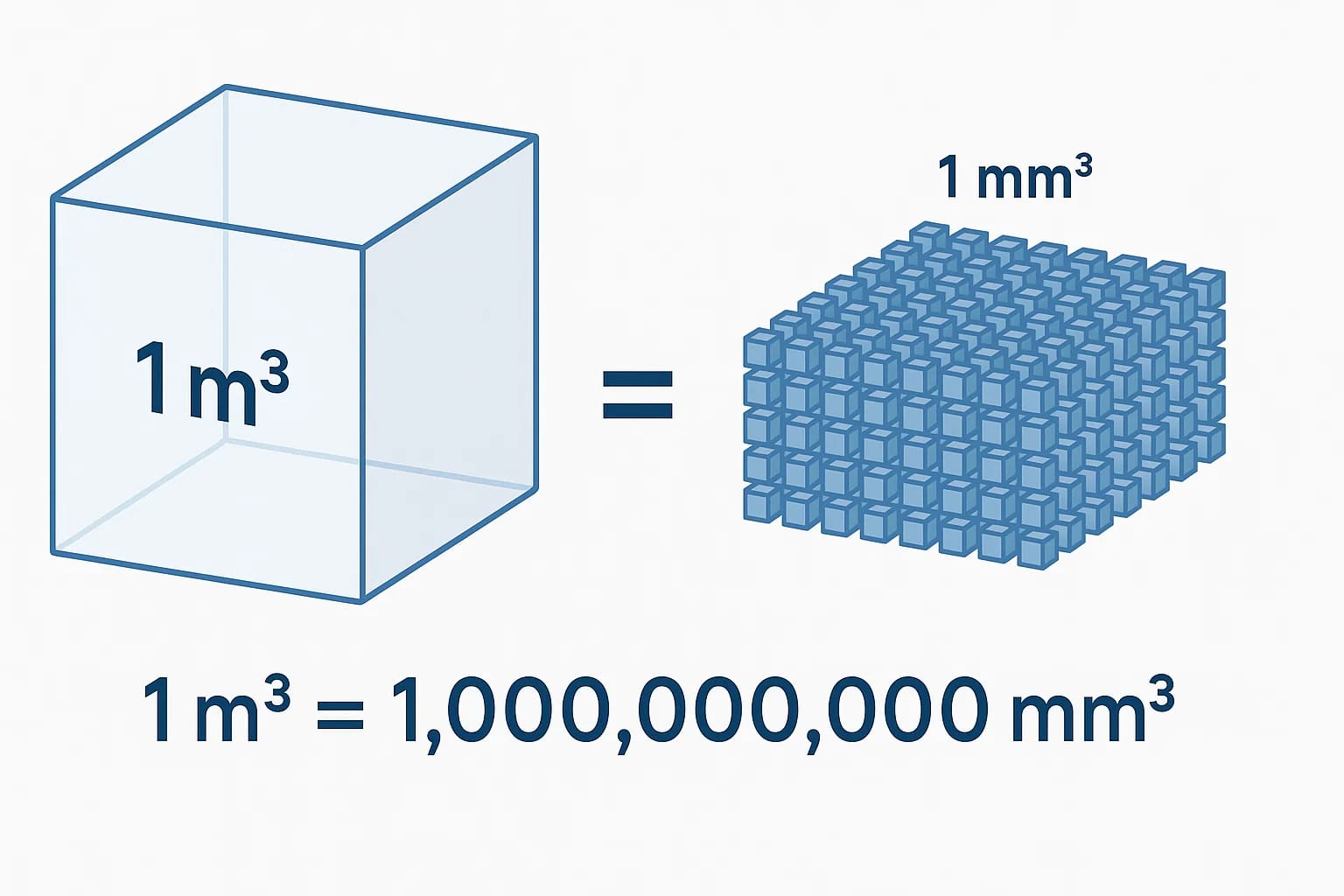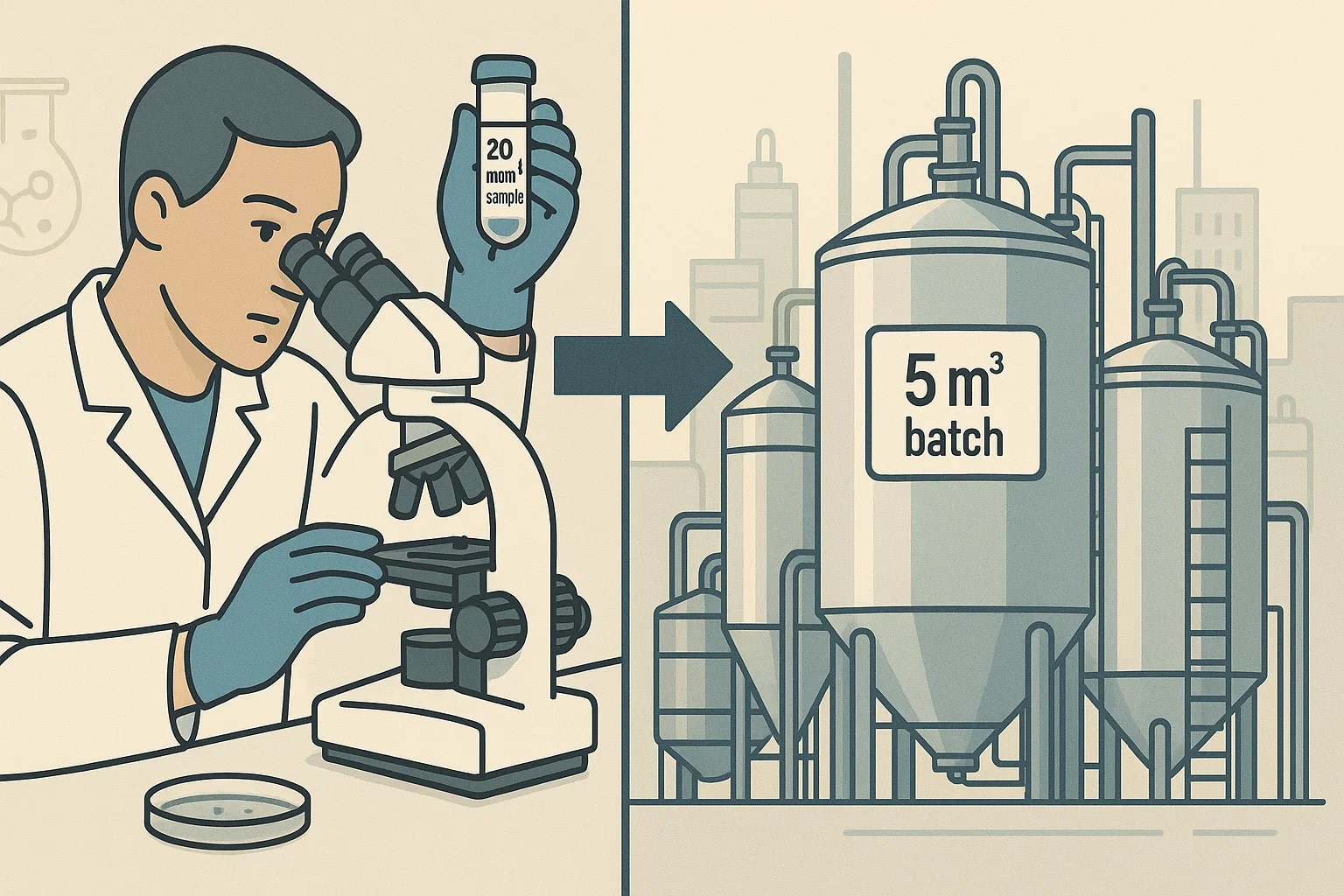cubic meter to cubic millimeter – How to convert m³ to mm³
The conversion from cubic meters to cubic millimeters shows just how flexible the metric system can be. A cubic meter measures entire rooms or storage tanks, while cubic millimeters are used for the tiniest drops of liquid or microscopic samples. This conversion links the world of large-scale engineering to precision at the microscopic level.
What is a cubic meter (m³)?
A cubic meter is the volume of a cube with each side measuring 1 meter. It equals 1000 liters, 1,000,000 cm³, or 1,000,000,000 mm³. This unit is the global standard for large-scale measurements, used in construction, logistics, and environmental reporting.
What is a cubic millimeter (mm³)?
A cubic millimeter is the volume of a cube with each side measuring 1 millimeter. It equals 1⁄1000 cm³ or 1⁄1,000,000 liter. This tiny unit is essential in medical dosing, microfluidics, 3D printing, and material science where extreme precision is required.
Conversion formula – cubic meter to cubic millimeter
The scale difference is huge, but the relationship is exact.
The base equivalence is:1 m³ = 1,000,000,000 mm³
To convert cubic meters to cubic millimeters:1 cubic meter = cubic millimeter × 1,000,000,000
To convert cubic millimeters to cubic meters:1 cubic millimeter = cubic meter ÷ 1,000,000,000
Examples:
-
0.002 m³ = 2,000,000 mm³ -
500,000,000 mm³ = 0.5 m³

If you need conversions across other units too, Jetcalculator’s Volume Converter and complete set of Conversion Tools help you calculate quickly and precisely.
Do you know?
-
In medicine: Drug doses in liquid form are sometimes described in mm³ for micro-scale experiments, while hospital oxygen or water supplies are managed in m³.
-
In 3D printing: High-resolution printers track material output in mm³ to achieve precise layering, though overall material stock is stored in m³.
-
In education: Science teachers often demonstrate how 1 m³ equals one billion mm³ using cube models to make the scale difference tangible.
Tiny volumes powering big discoveries
This conversion comes alive in biotechnology. A lab may handle samples as small as 20 mm³ when analyzing cells, but the production facility that scales the same innovation operates in m³ to handle full batches. Both are describing the same kind of volume, just at different levels of scale.
The same link appears in engineering. A water storage tank might hold 5 m³, but a micro-sensor designed to monitor leaks may detect changes measured in mm³. Without the ability to switch easily between these two extremes, precision would be lost.

The quiet formula behind global progress
The formula 1 m³ = 1,000,000,000 mm³ highlights the incredible range of the metric system. It allows scientists, doctors, and engineers to describe the tiniest droplet and the largest container within one consistent framework.
By converting between cubic meters and cubic millimeters, we see how a single measurement system adapts seamlessly from micro to macro. It’s a reminder that precision and scale are never separate — they are two ends of the same measuring stick.

